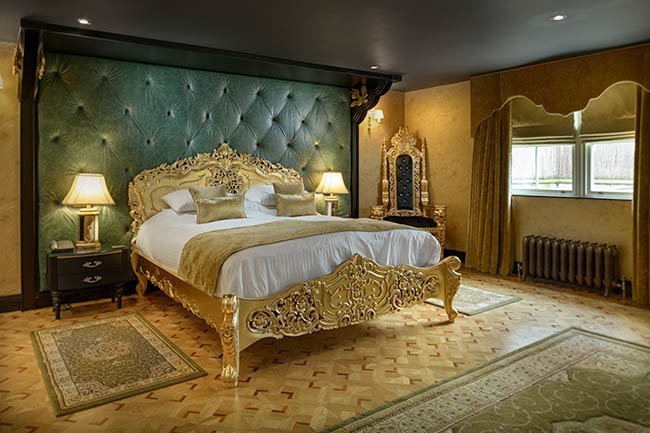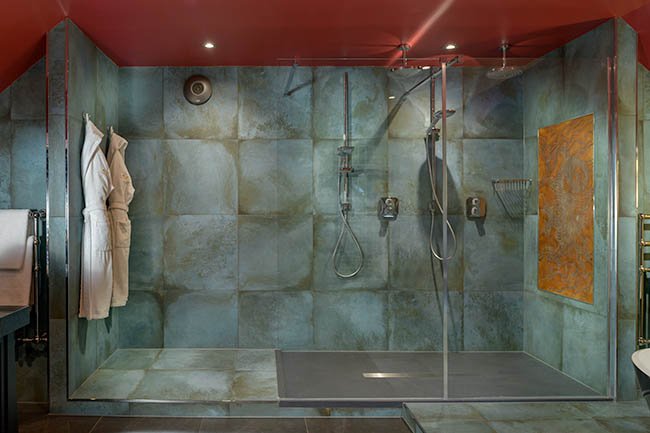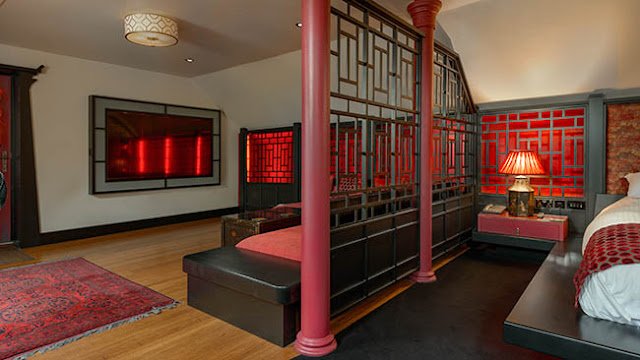The hardest room in the world
mpressing new clients is an art form. When I was contacted by an interior design firm that fitted out boutique hotel rooms, I was flattered, but keen to show what I could do for them on a long term basis. I’d shot the owner’s home last year, and it had subsequently sold within a few days of the listing going live, so they were well aware of my capabilities. That had actually been a bit of a toughie in terms of lighting.








The company website and brochures featured nice enough photography, but it was apparent that it wasn’t done by a professional, as the lighting was flat, and the vertical lines within the scene weren’t straight. A dead give-away every time. The location was the Shangri-La suite at the posh gastro-pub and hotel called The Crab & Lobster just outside Thirsk in North Yorkshire. The short brief was to shoot about 15-20 images detailing the whole room, leaving out any of the “worn” elements. They’d tried to shoot it themselves, but just didn’t have the skills or equipment to do it effectively on this occasion. We had the room for about 2hrs max, so it was going to be a bit of a race against time. Clients often underestimate the physical time needed to complete a complicated shoot.
I arrived on a torrential-rainy afternoon after a two hour white-knuckle drive down the A1M, being tailgated by massive lorries and Audi drivers who all apparently have these magic braking systems and robotic reaction times. I got the keys to the room, and humped my gear up to the door.
Once inside, my plan for a 2 hour shoot went out the window. There was almost zero natural light, the furnishings were all black and dark red, and the bathroom section was shiny marble, again devoid of much natural light. The client turned up with his son (who was the existing photographer) and they explained a bit more about what they needed. In the meantime, another room had been vacated, meaning that I needed to get that done as well. I headed downstairs to start on that one.
It was a bit opulent in terms of decor as far as my tastes were concerned, but some thought and expense had obviously gone into it. This was way darker than the upstairs room, with gold furnishings, floor, and walls. The ceiling was a dark grey – meaning that no light could be bounced off it effectively. This was basically a black box with stuff in it.
I’d packed my high-res Nikon D800 for this job. The quality of files, and dynamic range of the sensor meant that I could get as much out of the raw files as possible to construct final images in post production. I needed 15 or so files in this room, so got going straight away. Each bit of the room was lit differently, and required a specific approach so that a composite could be put together. My plan for each shot:
Set up the composition.
8 ambient light exposures with all lights off – 4 stops either way of what the camera reckoned was correct.
8 ambient light exposures with all the interior lights on.
Separate flash exposures using flash through a brolly, or bounced off a white reflector.
As many flash highlights as were needed to light the various parts of the scene that needed it.
It ended up being about 25-30 frames for each finished image. There was no way that you could shoot the rooms with one exposure given the open-plan nature, and mixture of light sources. The base ambient exposure was around 8 seconds at f11,and iso 200 – so dark.
A tricky shot was the panorama – so this required the shot to be split into two halves – each needing exactly the same treatment on each section. I spliced the ambient exposures first, then did the same for the flash frames, and overlaid them with a view to mixing the best of each. I had to retouch myself out of the mirror reflection, and take the reflected scene into account when shooting it.
The bathroom was one of the most difficult things I’ve ever tackled. It was like a sponge for light. I got up to 20 seconds at f11, and the black tiles were just about starting to show some detail. I had to close the blinds, as direct sunlight was pouring in straight towards the lens., and any fired flash was reflecting everywhere. I stuck the flash gun on a stand at both sides of the room eventually, bounced it off the ceiling, and used each exposure to splice together a frame without any reflections. The highlights behind the bath were carefully positioned.
It took two hours to do the whole room from start to finish. That was the easy room!
The Shangri-La wasn’t being occupied luckily, so I had enough time to dedicate myself to it without any time pressures. I used the same technique as I did for The Hermitage room – a mixture of ambient frames combined with light-on frames, and any flash exposures.
I captured the separate sections of the suite by lighting them separately and composing the final image in Photoshop as usual. The aperture between rooms was used to draw attention to the things at the far end.
The bathroom needed a different approach, so I used directional flash coming in from the divider window to the right. This gave a lovely atmospheric quality of light which acted as the base for some extra illumination here and there.
The fun started after I’d finished everything. It was 5.30pm, and I’d packed away everything. I took a last look around and checked to see if I’d got everything. As I went to leave, I switched the lights off, and by chance found a switch that had never been turned on in the first place. My stomach churned as it powered up an entire bank of beautiful, mood-enhancing red lights behind the decorative screens, and around the base of the bed. It literally transformed the entire room, and I’d just spent 3 hours photographing each part of it without having any clue that it was there. There was no way I could ignore it, as this was a key feature of the suite – so it all had to be shot again.
Now spending 2 hours repeating the process was not something I was looking forward to, so I opted for a compromise – I set the camera up in all the original positions (or as close as I could get using the previews on my iPad), and reshot single frames showing the same scene with the red feature lights switched on. When I got onto my workstation, it became apparent that the difference in perspective/distance between the originals and newer frames was considerable to say the least. It took some extremely heavy retouching & artistic licence to match up the lighting with the rest of the stuff in the image. After some time, and much coffee, it worked, and came out looking great.
The overall portfolio of shots was a great success – they convey the mood of the suites perfectly, and the client was so happy that his son has been retired from the hardcore photographic duties, and has been replaced by yours truly. Making an effort does work in the end.